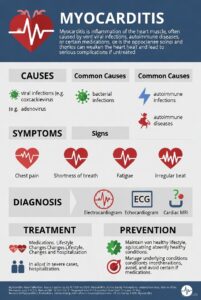Role of Nursing Personnel
- Registered Nurse (RN)
- Pre-procedure
- Assess for allergies, especially to contrast dye. Perform baseline assessment, including vital signs, pulse oximetry, heart and breath sounds, neurovascular assessment of extremities (e.g., distal pulses, skin temperature, skin color, sensation).
- Assess baseline laboratory values (e.g., cardiac biomarkers, creatinine).
- Teach patient and caregiver about procedure and post-procedure care.
- Post-procedure
- Perform assessment and compare to baseline: vital signs, pulse oximetry, heart and breath sounds, neurovascular assessment of extremity used for procedure, assessment of catheter insertion site for hematoma, bleeding, and bruit.
- Monitor ECG for dysrhythmias or other changes (e.g., ST segment elevation).
- Monitor patient for chest pain and other sources of pain or discomfort.
- Monitor IV infusions of anticoagulants, antiplatelets.
- Teach patient and caregiver about discharge drugs (e.g., aspirin, clopidogrel, antianginal drugs).
- Teach patient and caregiver about discharge care including signs and symptoms to report to HCP (e.g., site complications, return of chest pain).
- Pre-procedure
- Licensed Practical/Vocational Nurse (LPN/LVN)
- Give drugs before and after the procedure (consider state nurse practice act and agency policy).
- Assess neurovascular status of involved extremity every 15 min for the first hour, then according to agency policy (consider state nurse practice act and agency policy).
- Check for bleeding at catheter insertion site every 15 min for the first hour, then according to agency policy.
- Report changes in neurovascular status of involved extremity or any bleeding to the RN.
- Unlicensed Assistive Personnel (UAP)
- Take vital signs and report increases or decreases in HR or BP to RN.
- Report decreases in pulse oximetry to the RN.
- Report patient complaints of chest pain, shortness of breath, and/or any other discomfort or distress to RN.
- Assist with oral hygiene and hydration, meals, and toileting.
- Record oral intake and urine output as ordered.
- Perform related skills as ordered (e.g., capillary blood glucose).
- Role of Other Team Members
- Respiratory Therapist
- Provide respiratory therapies (e.g., nebulizer treatments) as ordered and per agency policy.
- Respiratory Therapist




